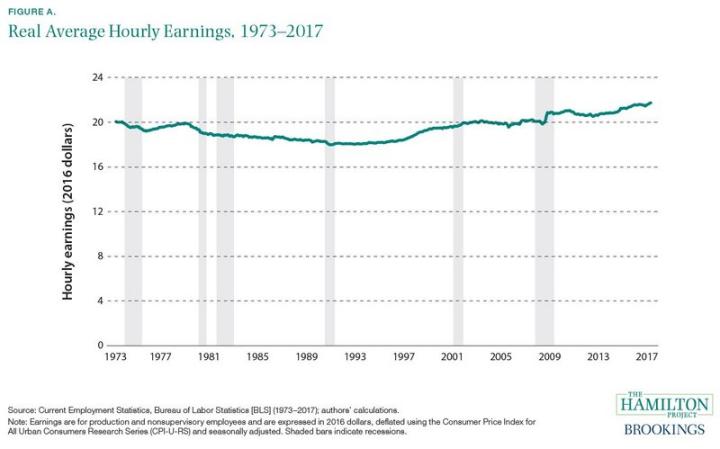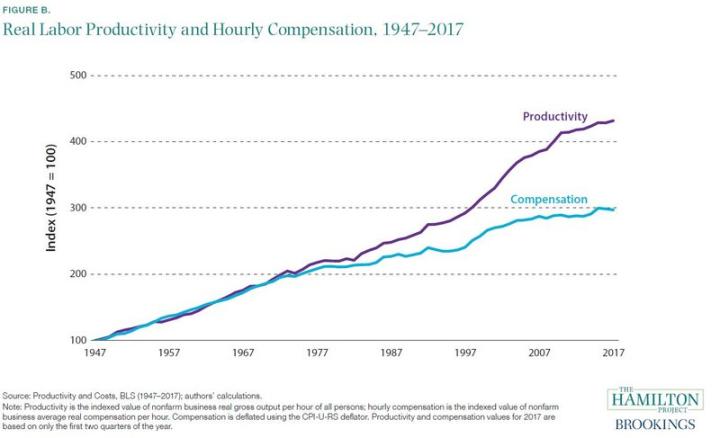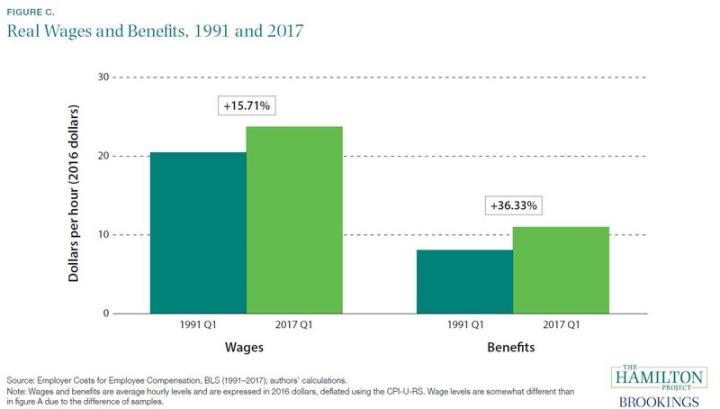Raising the standard of living is an illusion for many Americans

Dr. Roman von Ah
Economics
The American dream that each generation is better off than its parents' generation is tarnished. Adjusted for inflation, wages are just 10 percent higher than in 1973, a wage growth rate of a meager 0.2 percent.
The American dream that each generation is better off than its parents' generation is tarnished. Adjusted for inflation, wages are just 10 percent higher than in 1973, a wage growth rate of a meager 0.2 percent.
13 Facts about Wage Growth in the USA
The Hamilton Project, a Brookings Institution think tank, recently published the insightful article "Thirteen Facts about Wage Growth" on U.S. wage growth over the past 4 decades.
What are the economic laws that affect a typical worker's wage? Basically, 3 forces play a role:
- Productivity of a worker: this in turn depends on the human and production capital employed and the efficiency with which these forms of capital are used
- Share of national income paid out in the form of wages
- Distribution of labor compensation between wages and non-wage costs (including health care expenses, which in the U.S. are paid (in part) by the employer)
Real hourly wages USA, 1973 - 2017
Productivity and wage growth in the USA
For real wages of typical workers to increase, a few conditions must be met:
- they must become more productive over time
- they must have sufficient bargaining power with employers so that their share of output is stable or rising
- labor income must not simply be concentrated in the top wage categories
As the chart shows, productivity has risen faster than workers' compensation since the 1970s. Reasons for the increase in productivity include technological progress, increases in human and productive capital, and improved operational processes.
Total labor compensation consists of wages and non-wage labor costs. In Switzerland, the latter includes AHV, IV, ALV, BVG, UVG. In the U.S., it includes health, life, disability insurance and the accumulation of future pension income.
Since 1991, real hourly wages have increased by 15.71% and, in parallel, non-wage costs have increased by 36.33%.
Conclusion
Why have hourly wages stagnated for many workers?
1. the share of wages in gross domestic product (GDP) has been falling for working people for decades
2. higher-than-average wages have increased, while lower- and middle-wage workers have received no wage increases
3. compensation for higher-educated Americans increased significantly by 2000, leading to more wage inequality
4. globalization and technological changes have likely had an additional negative impact on lower wages
5. women's wages have risen, men's wages have fallen
6. reductions in the real minimum wage and lower union membership have (negatively) affected wage growth
7. mobility of workers within U.S. states has declined, reducing wage growth
8. the number of newly founded companies and company closures has decreased
How strong has wage growth been since the financial crisis ("Great Recession")?
9. real wage growth between 2007 and 2017 was higher compared to previous business cycles
10. underutilization of labor potential has declined; how far we are from complete full employment is an open question (but hardly very far)
11. recent labor productivity growth has been rather slow
12. wage growth has been distorted in recent years, as the share of Baby Boomers now entering retirement years has increased (they earn more than younger workers)
12. wage growth has been among top earners during the Great Recession; more recently, lower wage ranges have also benefited from wage growth



